Vesda System
The VESDA LaserFOCUS (VLF) is a very early warning smoke detector designed to protect small, business critical environments. Available in two models, the VLF-250 covers up to 2,500sqft, and the VLF-500 covers up to 5,000sqft.
VESDA VLF250
Active stand-alone detection system based on laser technology for the early detection of fires in small areas. The actuation on the loop and the resetting function is carried out via the esserbus transponder (Part No. 808623). Actuation on a conventional line is carried out via the same transponder. The device requires a separate voltage supply of 24 V DC.
Vesda Fire System
VESDA systems use a high-efficiency aspirator to draw air samples through a network of small-diameter pipes, strategically placed throughout the protected area. These air samples are analyzed by a highly sensitive laser-based detection chamber within the VESDA unit. The system can detect even minute smoke particles, providing very early warning of a potential fire. VESDA systems offer multi-level alarms, allowing for different stages of response depending on the severity of the smoke detection. VESDA systems are designed to be flexible and adaptable to a wide range of environments, from cleanrooms and data centers to large open spaces.
Features
- Plug & play function (simple installation and commissioning)
- Ultrasonic airflow sensing
- Laser-based absolute smoke detection
- Pre-engineered pipe network designs
- Programmable alarm thresholds
- Clean air barrier optics protections, Two-level air filtering
- Instant recognition display
- Instant Fault Finder™
- AutoLearn™ Smoke, Stand-alone system
- AutoLearn™ Flow
- Field service access door
- Multiple event logging (in separate logs), up to 18,000 events
- Offline/online configuration capability, 10 digit integrated bargraph display
Applications
- Local telecommunication exchanges
- Air handling units
- Smaller server rooms
- Correctional facilities
- Control rooms
- Utility control hubs
- Switch rooms
- Railway signal hubs
- Storage facilities
- Cabinets
- Hazardous areas (Class 1 Div 2)
- Substations
VESDA VLF500
The VESDA VLF-500 detector is a very early warning smoke detector designed to protect small, business-critical environments of less than 500 m2 (5,380 sq. ft.)
The detector works by continually drawing air into sampling holes in a pipe network. The air is filtered and passed into a detection chamber where light scattering technology detects the presence of very small amounts of smoke. Detector status information is communicated on the detector display and via relays or optional interface cards.
• Out-of-the-Box Installation and Commissioning • Ultrasonic Airflow Sensing • Laser-Based Absolute Smoke Detection
• Pre-engineered pipe network designs • Programmable Alarm Thresholds • Clean air barrier optics protection
• Instant Recognition Display • Instant Fault Finder™ • AutoLearn™ Smoke • AutoLearn™ Flow • Field Service Access Door
• Multiple Event Logging in separate logs • Event log – up to 18000 events • Offline/online configuration capability
• Up to 500 m2 (5,380 sq. ft.) coverage*
VESDA Xtralis Filter
It seems to me that a view of the heavenly bodies through a fine telescope, as well as a tour round the world.
VESDA Filter
• Easy swap replacement filter
• Fits VLC, VLF, VLP and VLS VESDA detectors
• Available singly or in packs of 20
• Two Stage Filtration
- First stage removes particles in excess of 20 microns
- Second stage is ultra-fine and removes more than 99% of particles of 0.3 microns or larger to provide a clean air barrier for optics protection
VESDA Maintenance
VESDA (Very Early Smoke Detection Apparatus) systems are advanced aspirating smoke detectors designed to detect fires at the earliest possible stage. Proper and regular maintenance is crucial to ensure their optimal performance, especially in mission-critical environments like data centers, clean rooms, warehouses, and industrial sites.
VESDA Filter Replacment
Filter Inspection and Replacement
Why: Filters trap dust and airborne particles, preventing contamination of the detection chamber.
Frequency: Every 6–12 months or as indicated by the system.
Tip: Always use genuine VESDA filters for compatibility.
Aspiration Pipework Check
Why: Pipes transport air samples to the detector; any blockage or leakage can delay detection.
Tasks:
Verify airflow rates
Check for blockages, cracks, or disconnections
Clean sampling holes if needed
VESDA Detector Calibration & Testing
- Why: Ensures sensitivity and alarm thresholds are accurate.
- Tasks:
Simulate smoke to test alarms
Verify detector response times
Recalibrate using manufacturer tools/software if required
VESDA System Diagnostics & Event Log Review
- Why: Helps in identifying faults or irregularities in performance.
Tasks:
Review fault logs and alarm history
Check firmware/software status
Confirm communication with fire alarm control panel
Battery and Power Supply Check
- Why: Ensures uninterrupted operation during power outages.
Tasks:
Inspect power sources
Test backup batteries
Check charger functionality
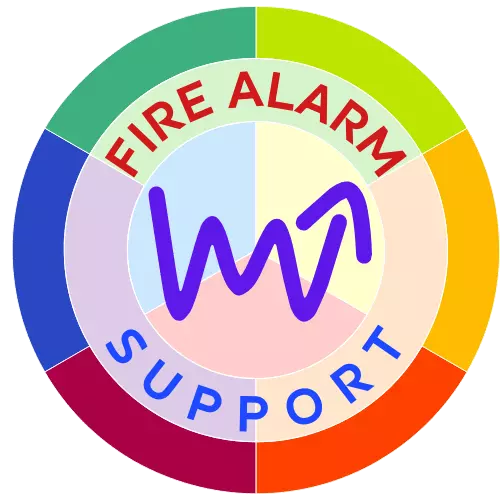
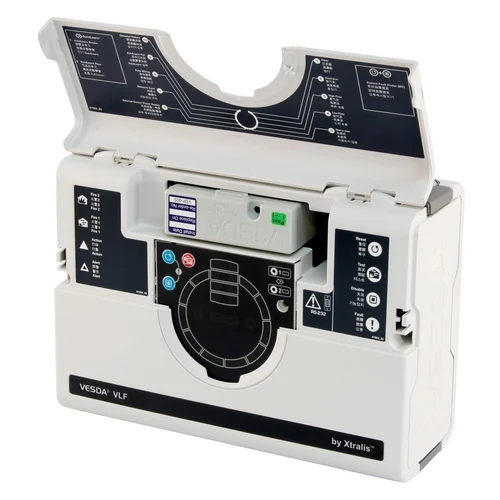
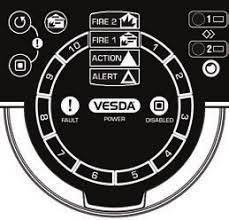
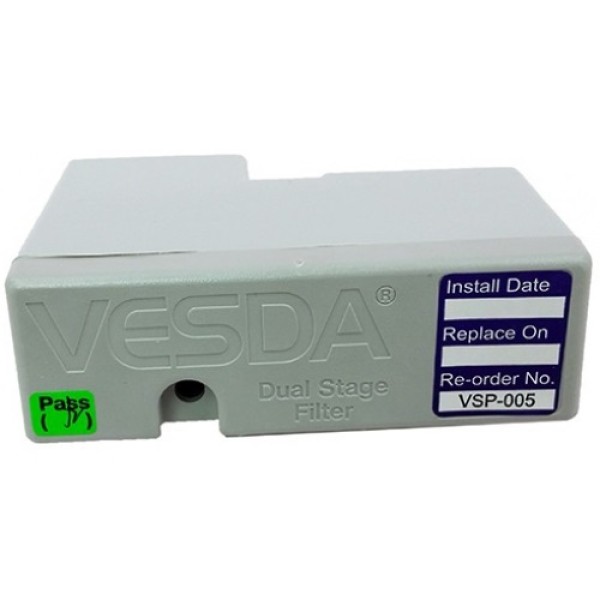

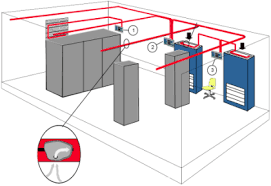
 |
|  |
| 